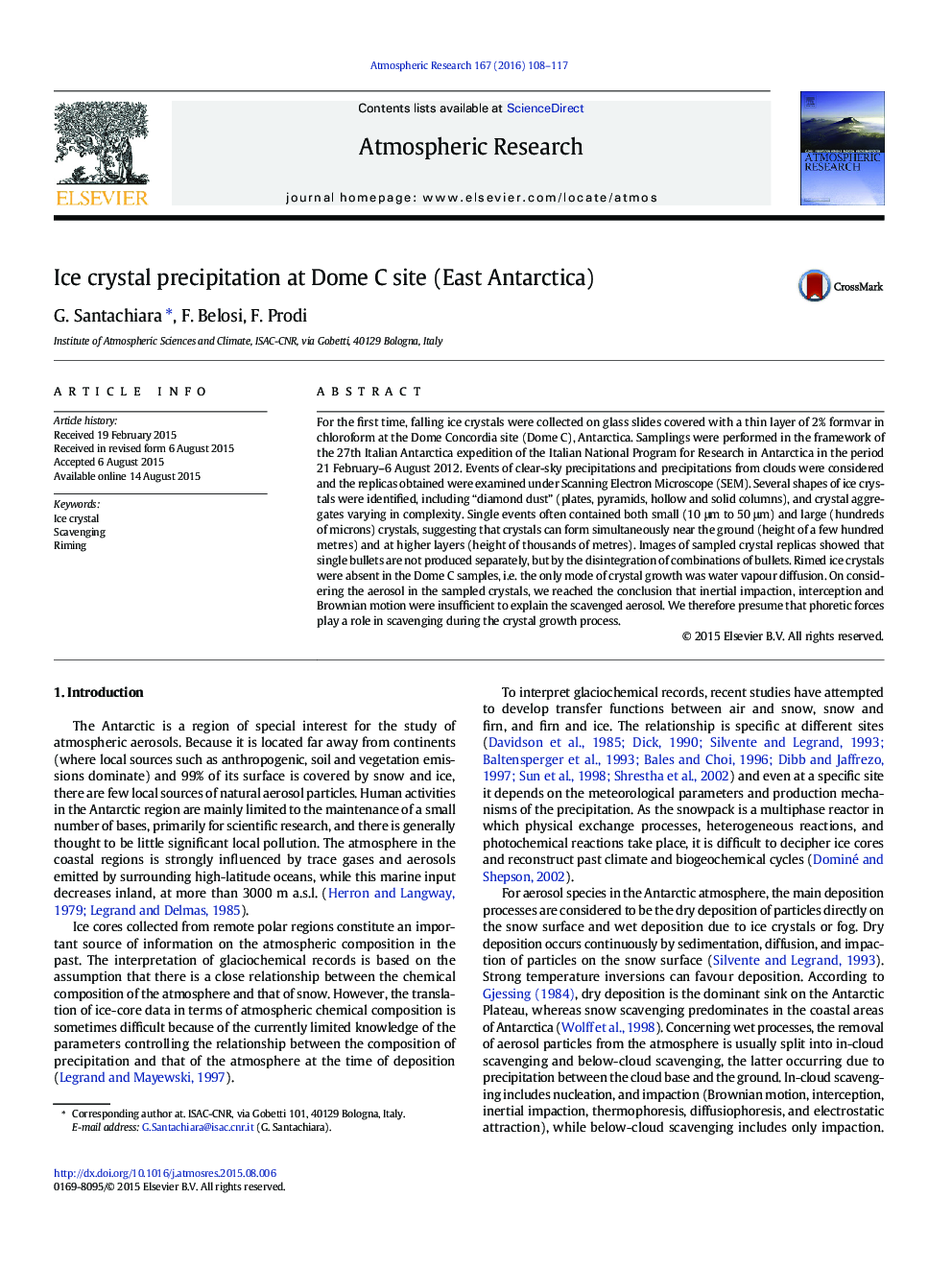| Article ID | Journal | Published Year | Pages | File Type |
|---|---|---|---|---|
| 6343145 | Atmospheric Research | 2016 | 10 Pages |
â¢Ice crystal precipitation at the Dome C site was replicated and examined under SEM.â¢Crystals take the form of plates, columns, needles, single bullets and aggregates of bullets.â¢Rimed crystals were not found.â¢Ice crystals mainly contain scavenged aerosol.â¢Phoretic forces may favour the scavenging process.
For the first time, falling ice crystals were collected on glass slides covered with a thin layer of 2% formvar in chloroform at the Dome Concordia site (Dome C), Antarctica. Samplings were performed in the framework of the 27th Italian Antarctica expedition of the Italian National Program for Research in Antarctica in the period 21 February-6 August 2012. Events of clear-sky precipitations and precipitations from clouds were considered and the replicas obtained were examined under Scanning Electron Microscope (SEM). Several shapes of ice crystals were identified, including “diamond dust” (plates, pyramids, hollow and solid columns), and crystal aggregates varying in complexity. Single events often contained both small (10 μm to 50 μm) and large (hundreds of microns) crystals, suggesting that crystals can form simultaneously near the ground (height of a few hundred metres) and at higher layers (height of thousands of metres). Images of sampled crystal replicas showed that single bullets are not produced separately, but by the disintegration of combinations of bullets. Rimed ice crystals were absent in the Dome C samples, i.e. the only mode of crystal growth was water vapour diffusion. On considering the aerosol in the sampled crystals, we reached the conclusion that inertial impaction, interception and Brownian motion were insufficient to explain the scavenged aerosol. We therefore presume that phoretic forces play a role in scavenging during the crystal growth process.
